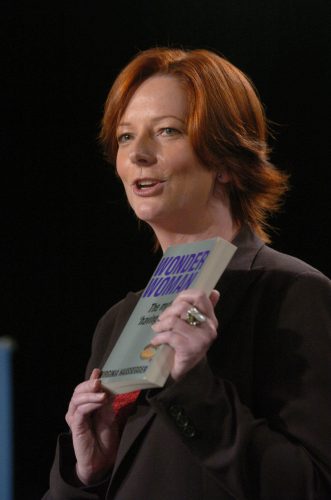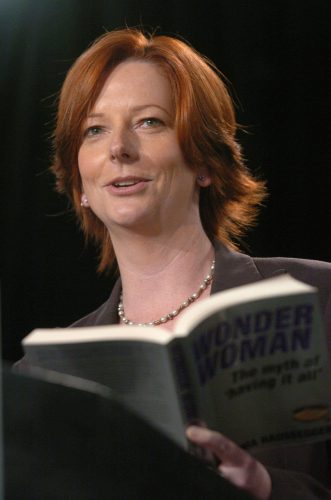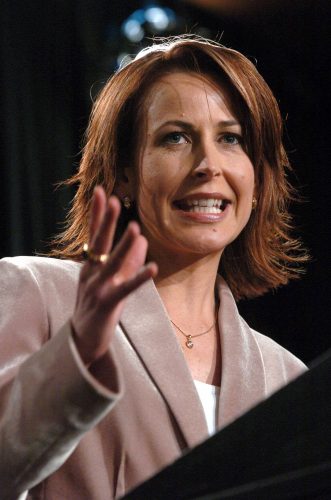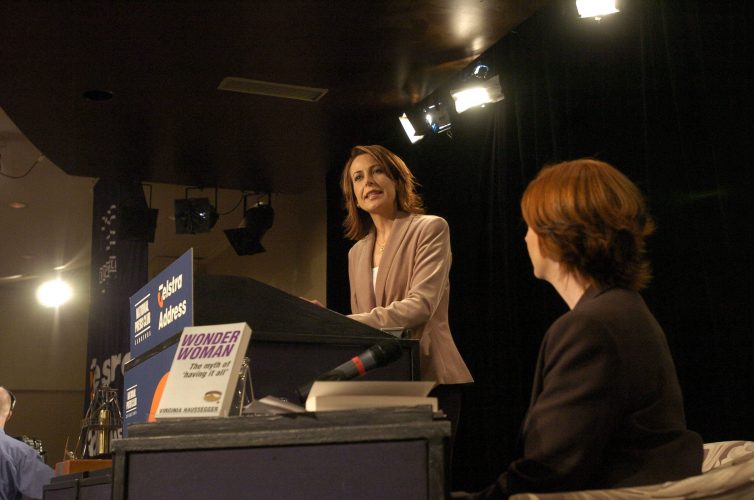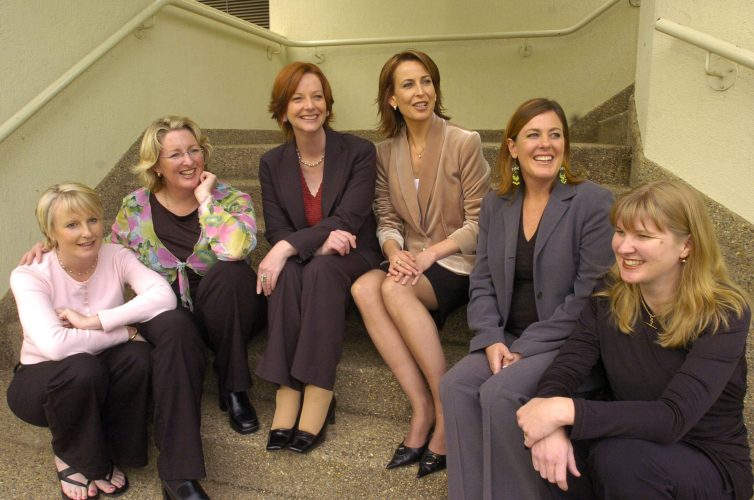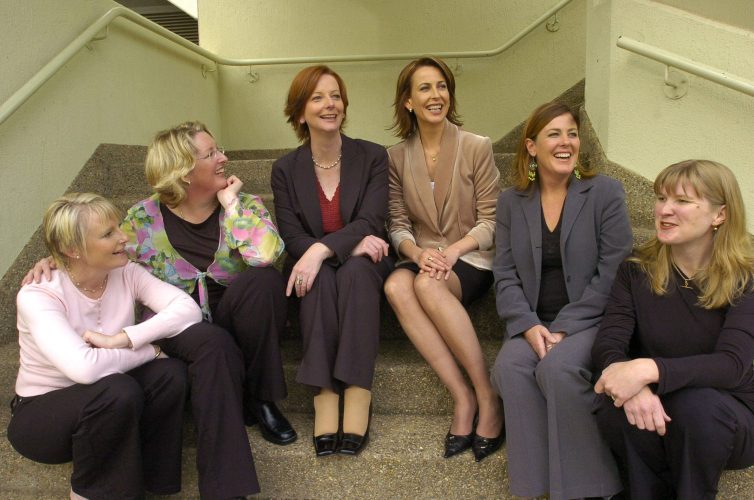With yet another embarrassed and frustrated senior executive quitting AWB this week, after a harrowing appearance at the oil for food inquiry, the embattled wheat exporter must be ready for some serious soul- searching.Perhaps it can start by asking if its mess might have been less if it didn’t exclude women from its boardroom. While AWB’s 12 men at the top make a botch of it, ambitious women in the company who aspire to rise need to look down to spot a potential role model. There she is, at executive management level: two lonely women surrounded by nine blokes.
The ”glass ceiling” turns 21 this year – first coined by the Wall Street Journal in 1985. But there’ll be no party to celebrate this coming of age.
And I suspect there will be little to toast when the 2006 Australian Census of Women in Leadership is issued next Thursday. Produced by the Federal Government’s Equal Opportunity for Women in the Workplace Agency, the census is an eagerly awaited audit of how women are fairing in Australia’s top 200 ASX- listed companies. It has been two years since the last census, and there was little champagne spilt then.
EOWA director Anna McPhee takes a long pause when I ask her what we can expect in the new census. The frustration is palpable. ”Overall, Australia, like the rest of the world, has a long way to go” she says.
Recent international data on women’s corporate progress in the United States, Britain, Canada and New Zealand provides miserable bedside reading. Combing through thick reports, the repetition of key words and phrases is alarming: ”sluggish”, ”unchanged”, ”a sobering account of how slowly change takes place”, ”disheartening”, ”the real story is of lacklustre performance”, and ”progress is glacial”.
Women make up between 45 and 47 per cent of the labour force in these countries, and 44.8 per cent in Australia. Like Australia, each country reports a flood of female graduates – often outnumbering males – into key industries. Yet the numbers of women at the most senior levels are barely budging.
Among the US Fortune 500 companies, only 14.7 per cent of board directors are women. In Canada’s FP500 it’s 12 per cent, in Britain FTS100, 10.5 per cent, and in New Zealand’s top 100 NZSX companies a miserable 7.1 per cent of board seats are held by women.
The growth is slow. In the US there’s been a 0.5 per cent average annual increase, and in Canada, about 0.4 per cent. Optimistic Americans say at this rate it will only take another 70 years for ”parity between women and men on corporate boards”.
At the EOWA’s last count, in 2004, only 8.2 per cent of board seats were held by women in Australia’s top 200 ASX companies (including trusts). And there is every reason to assume our annual growth rate will be as sluggish as the US – probably worse.
Since the last leadership census, Australia has seen no increase in the number of female CEOs in our top 200 companies. There are still 194 men and six women. And the past couple of years have seen just one new woman join the ASX200 chairman’s club.
So once again we’re in for another breast-beating media round of the same old questions and same old answers. Why are so few women at the top? Because the evil empire is run by sexist blokes who mouth PR platitudes about supporting women in the workforce, but secretly wish they’d all stay home, stop stressing, and shut up. And the truth in that answer would only be half untrue.
But the real reasons why women are failing miserably to crack the glass ceiling and move seamlessly into the top jobs and the positions of real power are myriad and complex.
On the face of it, hard-won legislative change has had an enormous impact in ushering hordes of well- educated, qualified women into the workforce and up the pipeline. But as the pipeline nears the top it narrows and clogs. Women continue to get squeezed to the sides as their male colleagues slide past, popping out – buffed, greased and ready to roll.
So what’s going on? Are women a little shy of power? No. (You’ve got to be kidding. We love the stuff.) Are women less ambitious? ”Absolutely not,” McPhee says. ”American studies have found that ambition knows no gender.”
So what then? Let’s start with ”visibility”. We know about ”face time”, those hours spent hanging out with the boss, playing corridor cricket, slaving in front of the computer screen – beer in hand – past 7pm, with the door ajar so all those slackers going home can see you. We’ve all done it. But men do it more than women. Women have got better things to do.
Nevertheless, visibility counts in a career. Women might be, as McPhee says ”heads down, bum up”, while men are much better at parading themselves and their wares. Visibility works. Absence doesn’t.
Given the social and biological order of the world, it is women who take time out from careers to have and raise children. But despite us all agreeing this is a good idea, women are penalised. The corporate world is intolerant of absence: it reeks of disloyalty and family distraction. Returning to reduced hours, or a part-time position, further cements perceptions of a woman’s diminished commitment to her job. And while such assumptions may be wildly off the mark, unfortunately we can’t legislate to outlaw sexist perceptions. Yet it’s gender-based stereotyping that gets all women in the end: both working mothers and non-mothers.
In its report, ”Women ‘take care’, men ‘take charge”’, US research firm Catalyst found that wildly outdated, and unfounded, notions of women as the ”giving, caring and supporting” species still clash hard against perceptions of men as the ”problem- solvers, the risk-takers, the tough, rational, leaders”. In the corporate world those ubiquitous, gender- based stereotypes still linger like old smells, wafting out of rusty, clogged pipes. Seventy years to achieve gender parity on corporate boards? Tell ’em they’re dreamin’.
